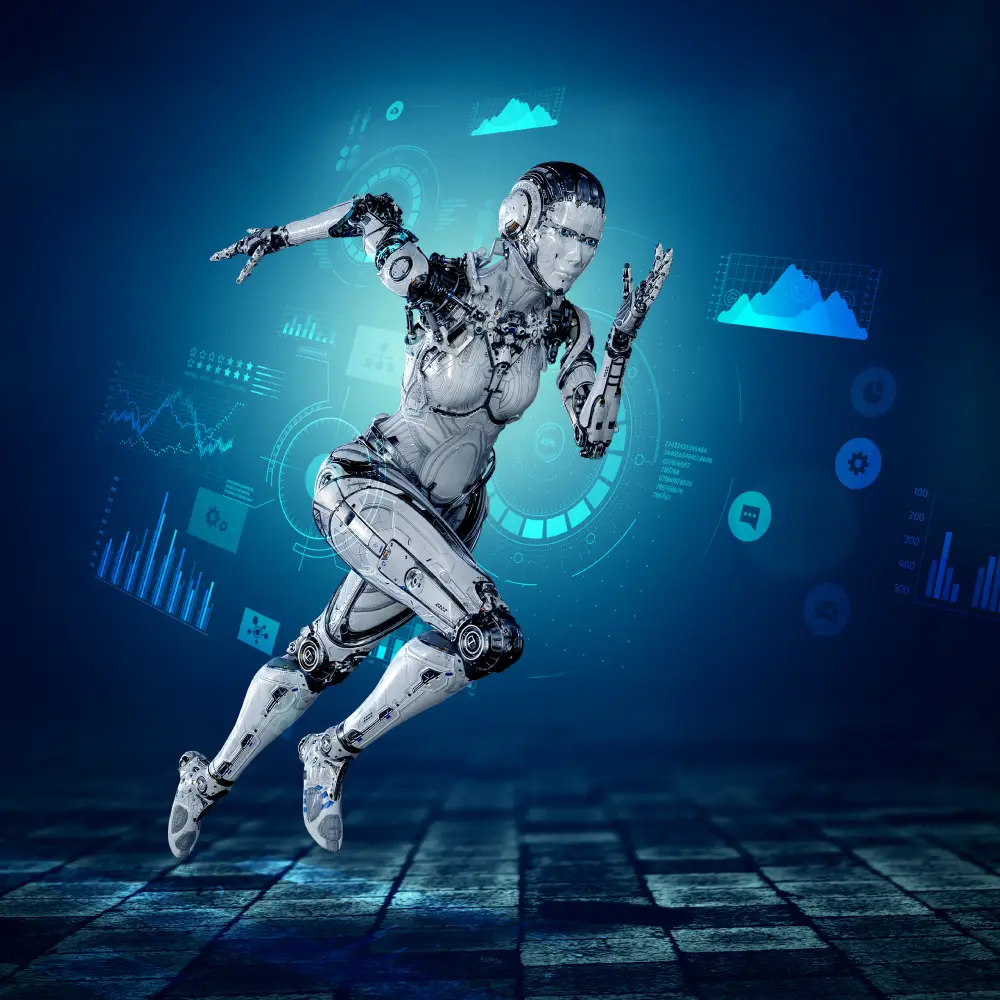From sports arenas to homes and hospitals, robots are stepping out of labs and into daily life—reshaping how we live, work, and imagine.

This summer of 2025 in Beijing, the crowd erupted as child-sized humanoids squared off in a boxing ring. Pink gloves flailed, metallic bodies wobbled, and toppled robots landed like fallen action figures. It was messy, chaotic—and historic.
Welcome to the World Humanoid Robot Games, staged at the Ice Ribbon arena. More than 280 teams and 500 robots from 16 countries competed in what has been dubbed the world’s first Robot Olympics. Machines sprinted, boxed, played football, hurdled, and even cleaned hotel rooms.
What looked like spectacle was something deeper: a sign that robots are no longer confined to labs or assembly lines. They are stumbling—literally—into our daily lives.
We are witnessing the dawn of a new revolution. Not just artificial intelligence, but AI embodied in robots—machines that walk, run, heal, build, and perhaps one day, even give birth.
Download practical resources to make AI easier, faster, and more useful — starting now.
The Robot Olympics were not showcases of precision. Heads rolled off mid-race, legs tangled in hurdles, and handlers rushed to reboot frozen limbs. But that was the point. Each failure was data. Each fall, a lesson in balance and resilience.
Behind the comedy lay transformation:

This was more than sport. It was the birth of embodied intelligence—machines learning by doing, by failing, and by standing back up. As robotics pioneer Rodney Brooks once noted, cognition emerges not from abstract reasoning alone, but from physical interaction with the world.
Beyond the arenas of Beijing, robots are quietly transforming industries worldwide:
Surgical robots such as the da Vinci system assist physicians with millimeter accuracy, reducing risks and recovery times.
Exoskeletons like Japan’s Cyberdyne HAL suit or France’s Wandercraft help paralyzed patients walk again.
Laboratory automation bots accelerate drug discovery, testing thousands of compounds in parallel.
Construction robots in Japan and the UAE are welding steel, laying bricks, and even 3D-printing homes.
Agricultural robots such as John Deere’s autonomous tractors cultivate fields with precision, reducing waste and water use.
Recycling bots use computer vision to sort waste more effectively, fueling circular economies.
Swarm robots aid disaster response, navigating rubble and hazardous zones where humans cannot go.
Robots are not here to replace people. They are amplifiers of human potential, taking on the dangerous, the repetitive, and the physically impossible—freeing humans for creativity and connection.
Perhaps the most astonishing frontier lies not in work or sport, but in life itself. In Guangzhou, Kaiwa Technology, led by Dr. Zhang Qifeng, is developing humanoid robots with artificial wombs. These machines are designed to carry a pregnancy from conception to birth, with prototypes expected by 2026.
The artificial womb replicates the human uterus with synthetic amniotic fluid and nutrient tubes, building on the landmark 2017 “biobag” experiment that sustained premature lambs in Philadelphia.
Advocates see this as a breakthrough for maternal health and infertility treatment:
Eliminating risks of gestational complications.
Providing controlled environments for fetal development.
Offering a lower-cost alternative to human surrogacy.
The ethical debates are profound. What happens to parental bonding? Who is the legal guardian of a child born from a machine? Bioethicists worldwide are already wrestling with questions of identity, consent, and reproductive sovereignty.
Robots are no longer distant prototypes—they are entering homes, streets, and cities.
The shift may feel gradual, but it is revolutionary. Just as the washing machine transformed domestic life a century ago, household robots are poised to become everyday companions.
The battlefield has become the latest frontier for robotics. Key developments include:



The power of robotics lies in embodiment. Artificial intelligence may provide thought, but robots provide action. Their future roles include:
Walking humanoids navigating disaster zones and urban ruins.
Rolling and tracked bots for logistics and combat.
Flying drone swarms for reconnaissance, strike missions, and supply chains.
Flying drone swarms for reconnaissance, strike missions, and supply chains.
Synthetic womb bots reshaping reproduction and maternal health.
From sports arenas to hospitals, homes, and battlefields, robots are becoming inseparable from human life. In war, they move first, absorbing risk and shifting the rules of combat. In peace, they heal, build, and serve. The age of robotics is not a distant vision—it is here, shaping how we live, fight, and imagine our collective future.